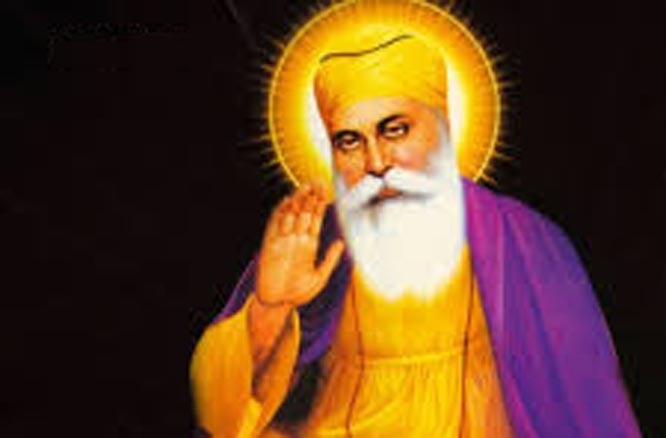
Guru Nanak’s date of birth and the Gregorian calendar

The news about Sikhs coming to Pakistan from India to celebrate the birthday of Guru Nanak made me think about his exact date of birth.
According to texts available on the life of Guru Nanak Dev Ji, the founder of Sikh religion and the first guru, he was born on April 15, 1469. A few other life accounts furnish November 29 as his date of birth. But a young historian from GC University Lahore’s history department disclosed in a conversation with me that Nanak was actually born on November 23. He was deriving his reference from Janamsakhi, where 14 Katak (of the Hindu Bikramajit calendar) is stated to be the great saint’s date of birth.
Janamsakhi (birth stories) are the biographical accounts of Guru Nanak written at various stages after his death.
Thereon my focus shifted to the Gregorian calendar and its relevance to our historical sensibility. Gregorian calendar was like a time scale for us to determine when exactly any historical event (in Punjab or South Asia) took place. It is the most widely used civil calendar in the world. It is named after Pope Gregory XIII, who introduced it in October 1582. The Gregorian calendar was a reform of the Julian calendar. On September 29, 1582, Philip II of Spain decreed the change from the Julian to the Gregorian calendar.
This affected much of Roman Catholic Europe, as Philip was at the time ruled over Spain and Portugal as well as much of Italy. In these territories, as well as in the Polish-Lithuanian Commonwealth and in the Papal States, the new calendar was implemented on Friday, October 15, 1582. The Spanish and Portuguese colonies followed somewhat de facto because of delay in communication. Many Protestant countries initially objected to adopting a Catholic innovation; some Protestants feared the new calendar was part of a plot to return them to the Catholic fold.
But gradually that calendar gained acceptability, and the protestant countries, like Britain and the British Empire (including the eastern part of US) adopted the Gregorian calendar in 1752.
In East Indian publications, however, dates and year of all three calendars -- Islamic, Bikramajit and Gregorian -- were put down. That calendar must have been introduced in India around 1835 when Lord Macaulay’s education reforms were introduced. Ever since the Gregorian calendar has been adopted, other calendars have been consigned a subsidiary status.
That brings us to the core argument of the current debate. In one of my articles on colonial Punjab, I tried to critically engage with Partha Chatterji’s formulation. In his book, Nation and its fragments, Chatterji propounds a binary of sorts - of ‘inner domain’ and ‘outer domain’. Outer domain comprises economy and politics and inner domain pertains to language, family values and religion.
Chatterji goes on to pinpoint inner domain as the socio-cultural site from where the Indian nationalism emanated. Outer domain, he writes, was controlled and manipulated by the colonial regime. Therefore, Indians were politically and economically subjugated by the British.
While studying the colonial Punjab, I thought, the British even did not spare the inner domain - particularly when they introduced Urdu as a vernacular in the province. Large number of Punjabi literati embraced Urdu as a medium of communication in due course of time. That mutation in the inner domain probably was the reason Punjabi nationalism was subdued. Such feelings were subsequently articulated through communal antagonism that culminated in the partition.
A few days ago when I got to know about Guru Nanak Dev Ji’s birthday celebration on 14 Katak (November 23), I felt like revising my standpoint. At once I realised that our inner domain stays intact in the crevices of religious events. Muslims in the Punjab do celebrate their religious festivals according to the Islamic calendar. Prior to the British Raj, various local calendars were in use.
Historians working on medieval period must come up with some study on this subject; it is vital in many respects. We know that the first battle of Panipat between Babur and Ibrahim Lodhi was fought in 1526 but what year and date has been cited in contemporary historical sources? Similarly, which calendar was in vogue during the Mughal rule?
With the wide ranging ‘reforms’ that the British carried out in India, the introduction of Gregorian calendar was one of them. This is the source of obfuscations like the multiple dates of birth of Guru Nanak. However, through religious/cultural tradition(s), other calendars have been kept from total obliteration. Our newspapers do carry dates, months and years from all three calendars but we are cognitively most familiar with the Gregorian iteration.